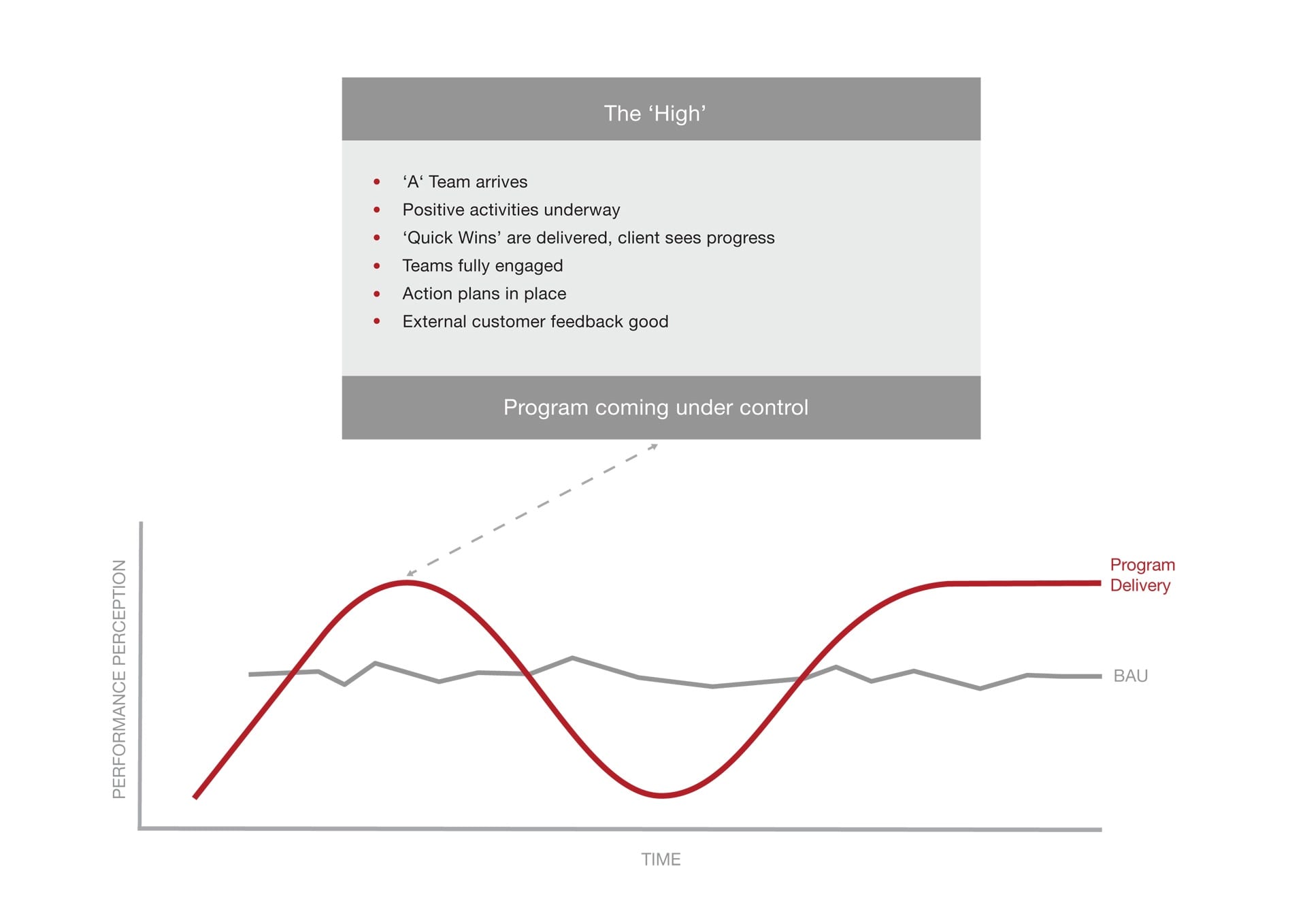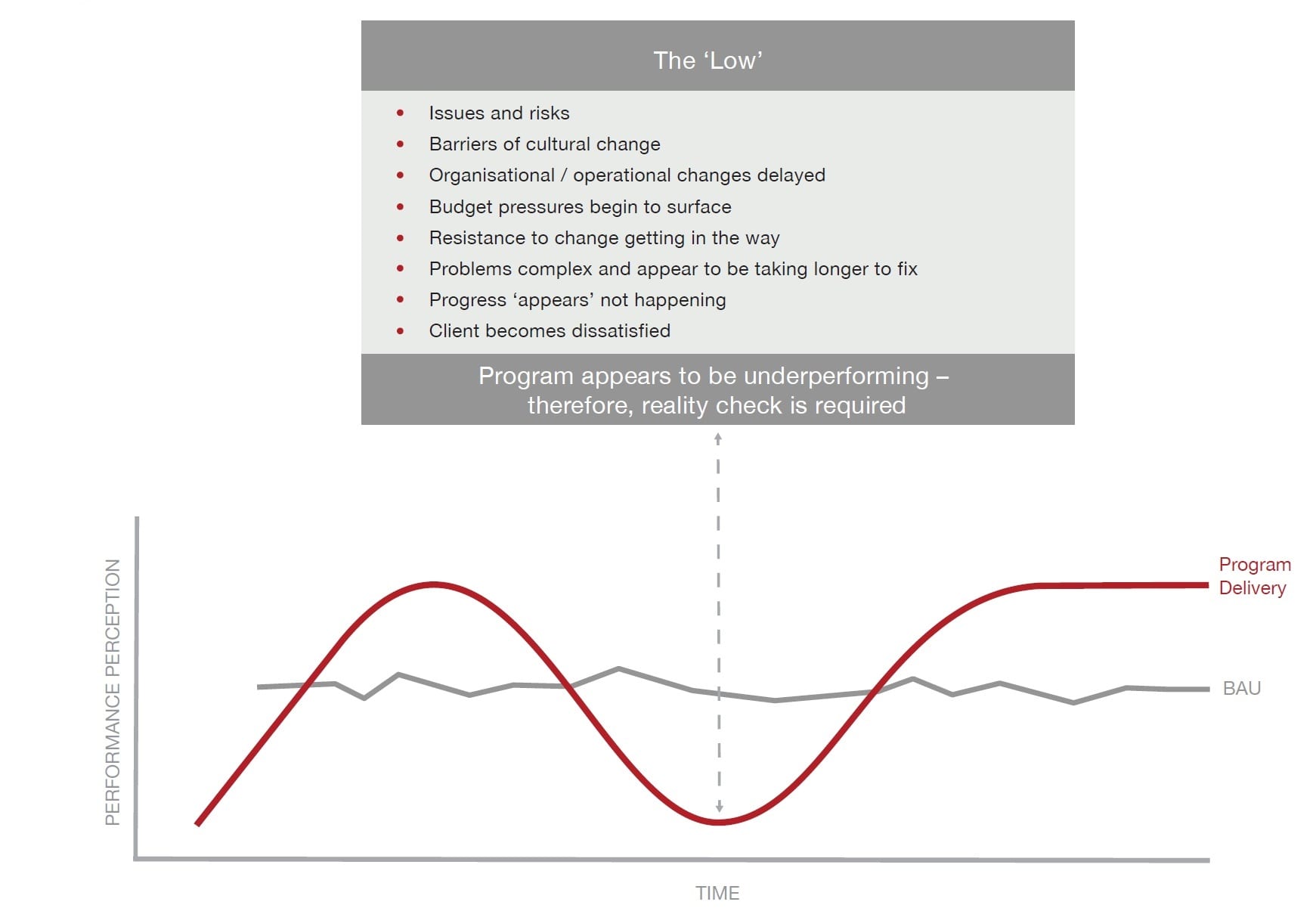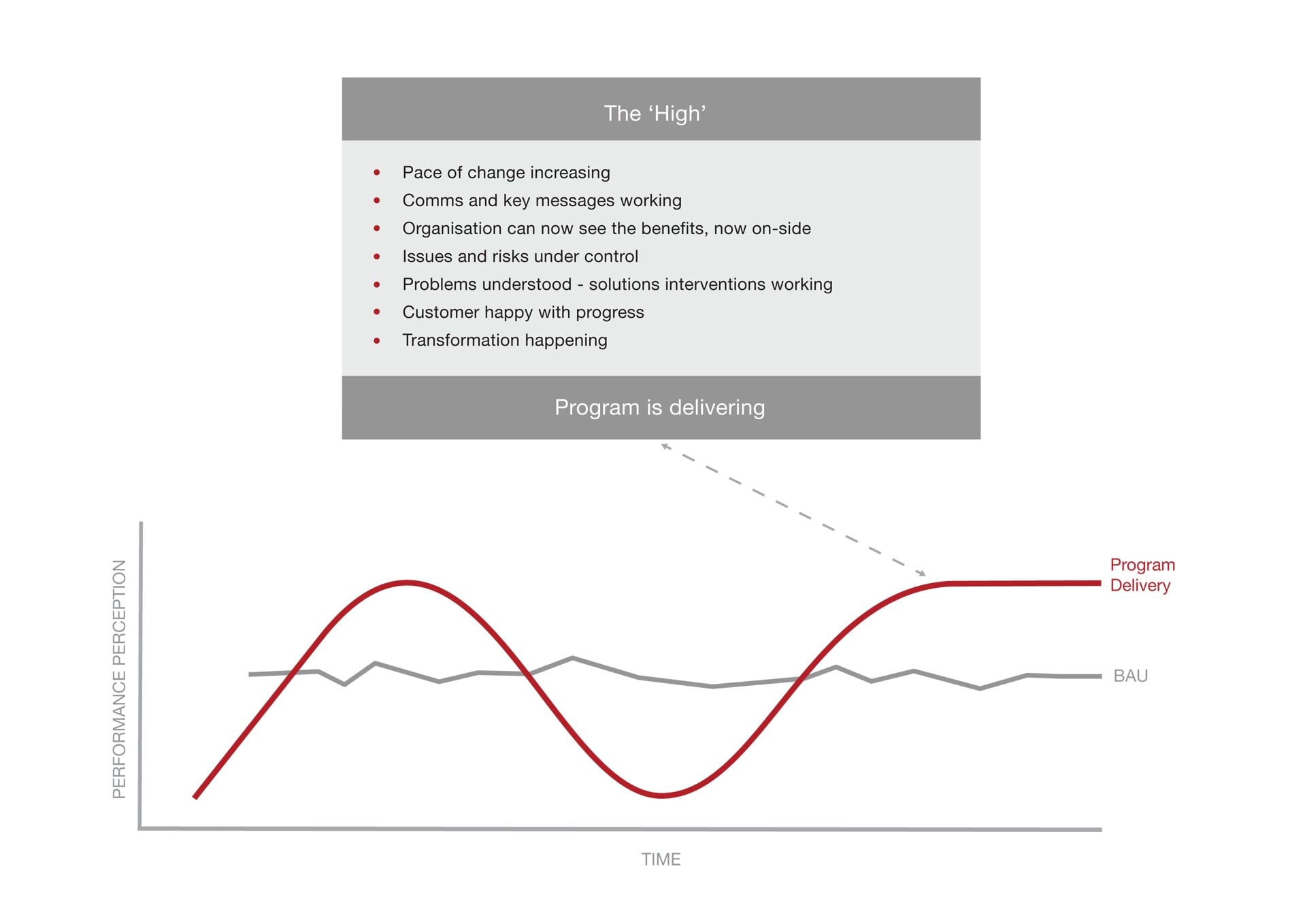A Business-Critical Program: the Clients’ Journey
The Beginning
There are typically two reasons to run a business-critical program: to solve an existing problem – one that is slowing down the delivery of business benefit – or to exploit a market opportunity that requires new or changed capabilities.
Mentor will get involved when a client decides to accelerate or recover a business-critical program – or to fix a significant problem the organisation is struggling with. Whatever the scenario, there is always an urgent need to find and implement a solution quickly and effectively. This imposes changes and stresses on a client organisation which need to be expertly managed.
We first talk to the client to understand any current delivery estimates. The planning process will start with these although they are often little more than “educated guesses”.
The initial stages of setting up a program will provide access to increasingly reliable data – “guesses” can become “informed estimates” and by linking reliable data with experience, the Mentor Planning Process will produce a baselined Execution Plan, which can be relied upon and committed to.
As we move through this cycle, different levels of expectation are established with the client.
These different levels of expectation create the “Highs” and the “Lows” in the business-critical program journey.
A positive start
The first “High” occurs when the program team is put together: the initial plan is established, the benefits required appear to be on the horizon, and there is excitement on the client’s side. Mentor may be seen as a “knight on a white charger bringing reinforcements”. There is a sense of relief in the executive team when starting off – “things can only get better now that we’ve got the people here who can help”.

The dark times
There is almost always a “Low” when the initial “educated guesses” become “informed estimates” and previous expectations are being re-set. Things can become difficult when reality starts to bite.
Many companies place too much confidence in ‘wild’ guesses and, as a result, have unrealistic expectations – and are blind, intentionally or otherwise, to the downstream hazards they create. Particularly those with a “JFDI” culture where bad news is unwelcome.
Barriers are often put up by a fear of change, and these will take time to break down – something not always recognised by senior management teams who wish things were otherwise. Unrealistic expectations lead to negative consequences.
 Open and honest conversation, and often direct feedback to the people involved in the program, help the problems and hazards become better understood and made clear. Often these have either been caused by the same people or if not caused by them, identified as issues that, for whatever reason, have not been fixed in time.
Open and honest conversation, and often direct feedback to the people involved in the program, help the problems and hazards become better understood and made clear. Often these have either been caused by the same people or if not caused by them, identified as issues that, for whatever reason, have not been fixed in time.
This adds a bit of spice to the mix. There is often a realisation of the situation and a feeling of guilt in this “denial phase”. As we start working with people, they understand what we are there to do – and realise what it is that they haven’t done.
There is always resistance and a fear of people’s jobs being “taken over”. It always happens but the fear is unfounded. Mentoring people to help them make the changes that are required and to improve or recover a situation is Mentor’s only and over-riding objective.
To overcome the resistance to change that exists within most organisations, unrecognised hazards and unrealistic expectations must be managed and a significant effort made by the Program Director to produce a realistic baseline – and communicate what it means to the team.
A strong Program Director will ‘educate’ senior management teams on the journey from ‘wild guesses’ through “informed estimates” to ‘reliable forecasts and commitments”.
Back on track with delivery
Eventually, the combined team of the client organisation and Mentor starts to become more effective; the program begins to accelerate, running smooth and fast. The client can see activities set in the plan being delivered; the objectives and commitments being met and the benefits being realised.

The ultimate success of a program
This is the “journey” that a client takes as a business-critical program runs its course – “Highs” and “Lows” should be expected as should many twists and turns in the road. An effective Program Director will not obscure facts with fanciful stories. Concealing bad news becomes a destructive pattern, leading to an execution fiasco. Reliable data is the foundation on which baselines can be built and commitments given.
The delivery team is at the core of the action. We’ve talked about the evolution of a Program delivery team and the role the Program Director plays in it in one of our previous blogs.
It is imperative that a Program Director manages the delivery teams’ way through the Program journey to ensure that initial relief is tempered; that denial is recognised as quickly as possible; and, fear and threat put into the right context so that people can be quickly settled, accepting and making the necessary changes.
For Mentor, managing a client’s expectations the right way – through the different stages of delivery is an integral part of securing the future success of any program.

